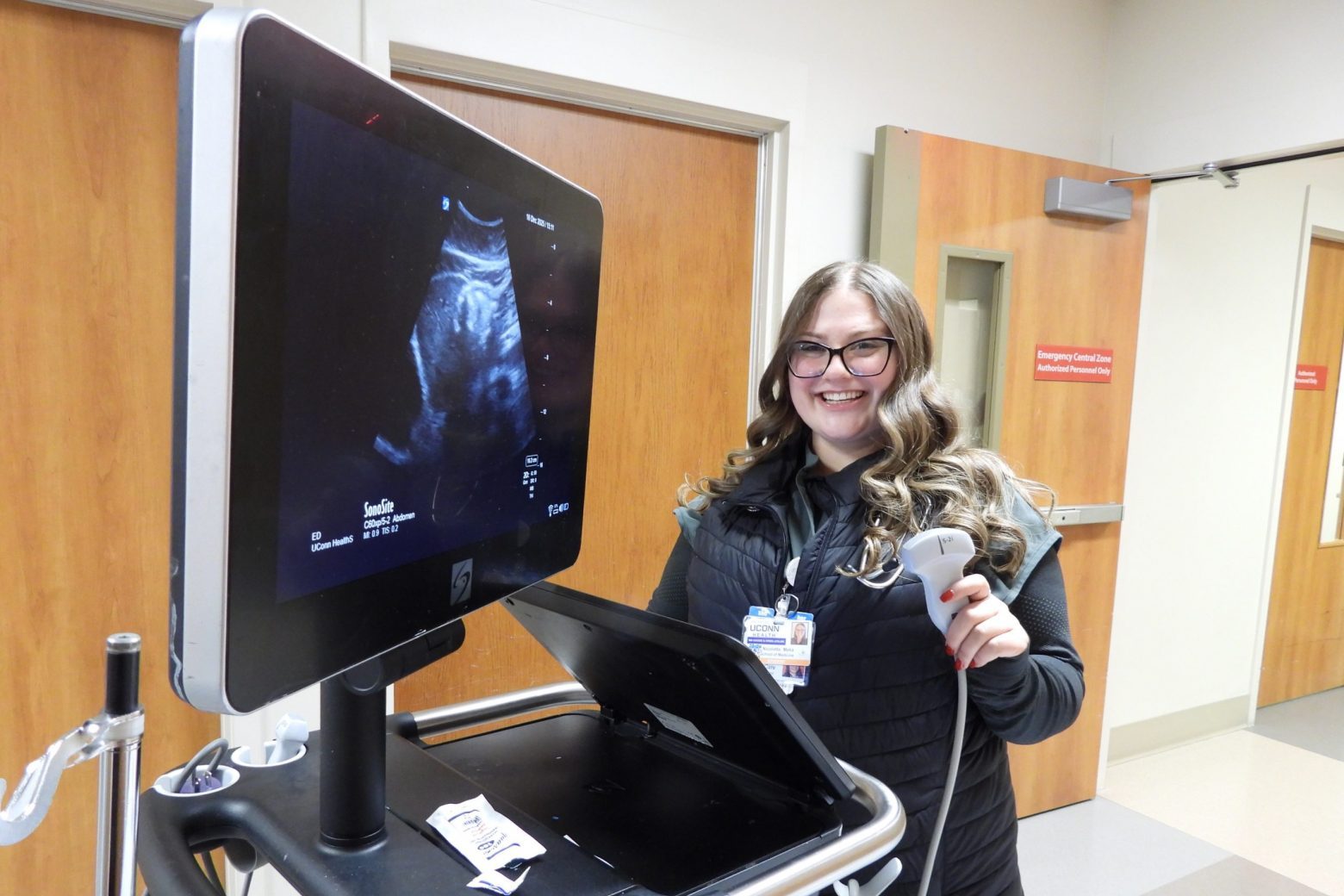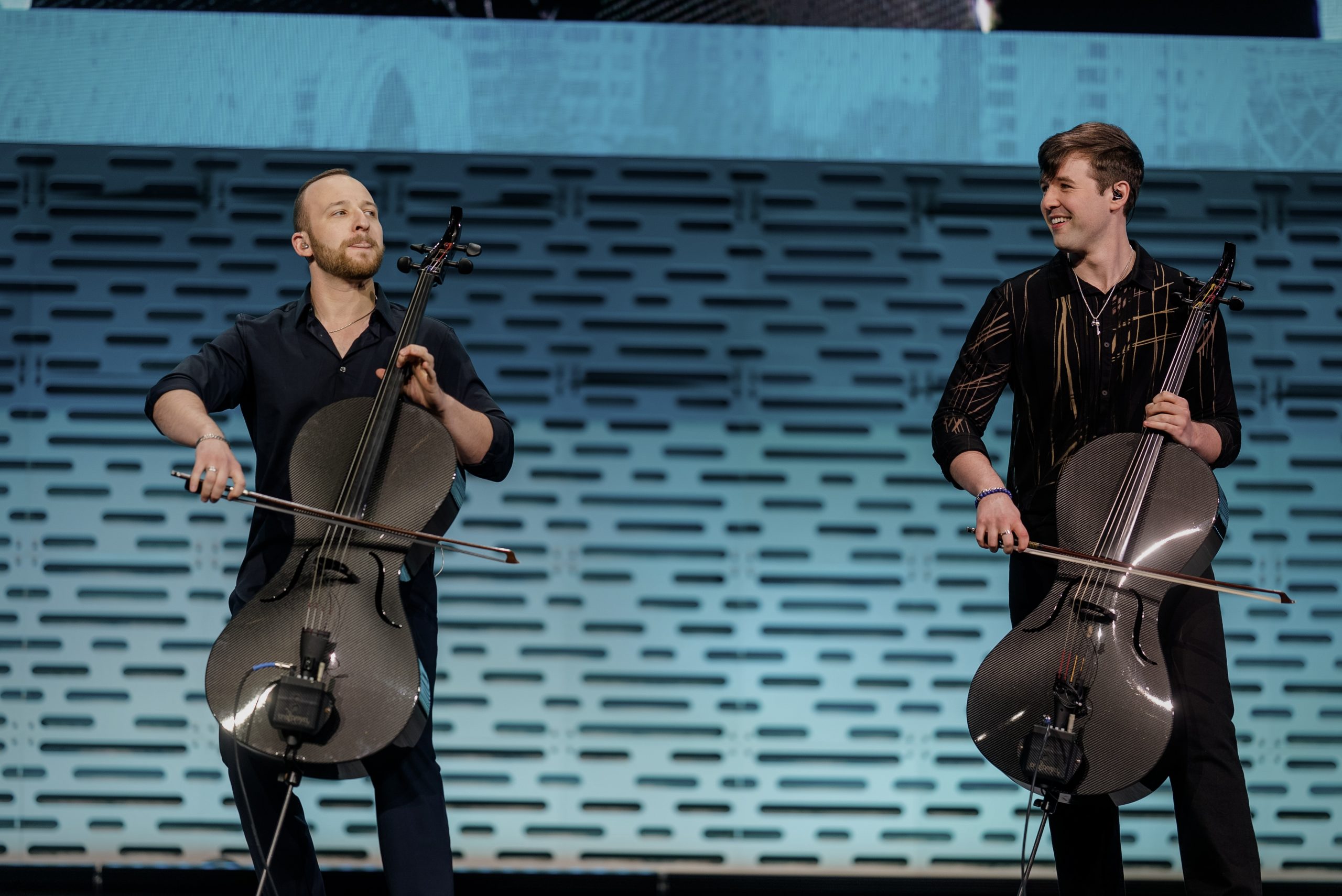The Connecticut Repertory Theatre (CRT) will continue its virtual 2020-21 season with an audio adaption of “It’s a Wonderful Life,” the Christmas tale that in its cinematic form, directed by Frank Capra, is considered a holiday season classic. Eight streamed performances will take place from Thursday, Nov. 12 through Saturday, Nov. 21.
The prerecorded production is CRT’s first-ever audio play, and is presented as a 1940s radio broadcast, with a book written by Philip Grecian and directed by Jennifer Scapetis-Tycer, assistant professor of voice, speech and dialect. A cast of 14 actors playing more than 60 roles performs the story with special sound effects developed by a Foley artist, who re-creates sounds for film, video, and other media.
Specially developed sound effects enhance the audience’s experience of the performance, adding to the classic feel of a production from the Golden Age of Radio. Several customized commercials were created specifically for the CRT production.
Tom Kosis, interim artistic director and production stage manager for CRT, says adjusting from a stage performance to an audio presentation is all a part of working in theater.
“We adapt in the theater, and that’s what we’re doing,” he says. “We’re doing our best to adapt to what our audience will get to enjoy and our students can learn from. That’s really the most important thing we’re able to achieve. Our sound department has done phenomenal work on this show. They have had to create fully art that is for this show, for the listener. Sometimes they have to create sound for the space in our theater, but this is fully sound for the microphone. That’s a skill they’re learning.”

Scapetis-Tycer says the cast of primarily student actors were eager to perform in a new way, noting that the classes she teaches in vocal performance techniques include proper use of microphones for acting.
“We do a lot of skills in the training program that directly feed into this,” she says. “We actually do microphone technique in the second year of the program, so all of the actors had a certain amount of experience even though they hadn’t done an actual radio play.”
Abigail Hilditch ’22 (SFA), who last year was in Scapetis-Tycer’s class, portrays six individual characters and appears in scenes as part of an ensemble in “It’s a Wonderful Life.” She says that, during the first table rehearsal, when actors begin to compile detailed notes about their parts, she was admittedly nervous.
“On the first read at the table rehearsal, I went in and voiced my concerns at how nervous I was,” she says. “I now feel very confident in voice acting. In the show, I have a lot of voices that I didn’t really know I could produce from my body. Now I have that confidence and that I can create like that with my voice.”
Hilditch says early in rehearsals Scapetis-Tycer suggested that actors seek inspirations for creating voices for their different characters. With the character Zuzu, the young daughter of protagonist George Bailey, Hilditch thought of Shirley Temple. She looked to telephone operators in the 1930s for her bank teller character, Hortense.
“For Zuzu, I added a lisp and that made it different from other voices and really solidified the voice for me. My teller voice Hortense is very nasal, whereas my chairwoman voice is further back and closed off,” she says. “It’s a lot of old and new information coming together to help with this new medium.”
The story of George Bailey’s moment of crisis on Christmas Eve and subsequent assistance from an unlikely angelic messenger named Clarence is a familiar staple of the holiday season partly because, as Scapetis-Tycer writes in the playbill prepared for the production, it is a story that has contemporary resonance.
“Set in the first half of the twentieth century, the story encompasses a string of historical events and key themes that strike me as incredibly relevant today,” she writes. “We first meet George in 1919, during the last pandemic, and the story continues through periods of social change, economic upheaval, and war. Through it all, fundamental economic, social, and spiritual questions are posed. How do we reconcile individualism with community? What is a good life and what is success? How do we understand the value of a human life? Can we envision a world in which all individuals are supported in ways that allow them to flourish and ultimately give back?”
Acting major Nick Luberto ’22 (SFA) has the lead as George Bailey. His previous credits include CRT’s “Shakespeare in Love” and the Cinnamon Summer Series’ “Much Ado About Nothing.” Equity actors performing multiple roles are Thom Sesma and Lisa Wolpe.
Sesma has extensive Broadway, Off-Broadway and National tour credits including “Man of La Mancha,” “Miss Saigon,” “Arturo UI,” “Sweeney Todd,” and “Discord.” His television credits include “Gotham,” “Madam Secretary,” “The Good Wife,” and “Person of Interest. Wolpe is a veteran of Shakespeare Festival performances across the nation and is the founder of the all-female, multi-cultural Los Angeles Women’s Shakespeare Company. Her hit solo “Shakespeare and the Alchemy of Gender” production has toured internationally.
Student actors performing multiple roles include Matt Bader ’21 (SFA), Eliza Carson ’22 (SFA), Nicolle Cooper ’22 (SFA), Jamie Feidner ’22 (SFA), Abigail Hilditch ’22 (SFA), Jim Zemin Jiang ’22 (SFA), Colin Kinnick ’22 (SFA), Alex Kosciusaek ’22 (SFA), Tyler Nowakowski ’21 (SFA), Sean Redahan ’21 (SFA), and Leone Julio Rodriguez ’21 (SFA).
All performances will be prerecorded and streamed online for eight performances beginning on Thursday, Nov. 12 at 7:30 p.m. and continuing through SAturday, Nov. 21 at 8 p.m. An American Sign Language interpreted performance scheduled for Saturday, Nov. 21 at 2 p.m. Post-show talkbacks are scheduled following performances on Nov. 19 and the matinee on Nov. 21. Ticket purchasers will receive a link and passcode via email 24 hours prior to the performance, which will allow access to the audio performance at the stated time.
For more information or to purchase tickets visit crt.uconn.edu.



